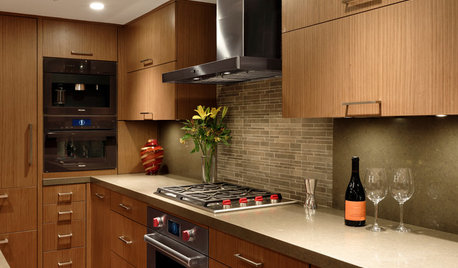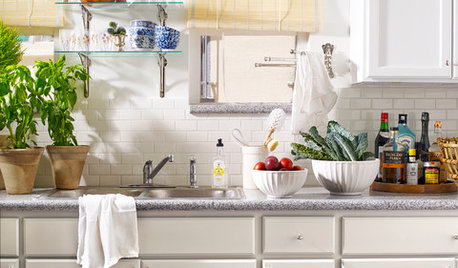Staining square foot boxes
craniac
12 years ago
Related Stories

SMALL KITCHENSThe 100-Square-Foot Kitchen: Fully Loaded, No Clutter
This compact condo kitchen fits in modern appliances, a walk-in pantry, and plenty of storage and countertop space
Full Story
SMALL KITCHENSKitchen of the Week: Amazing 40-Square-Foot Kitchen
This tiny nook with almost all reclaimed materials may be the hardest-working kitchen (and laundry room!) in town
Full Story
MOST POPULARThe 100-Square-Foot Kitchen: A Former Bedroom Gets Cooking
DIY skill helps create a modern kitchen where there wasn’t one before
Full Story
KITCHEN DESIGNThe 100-Square-Foot Kitchen: No More Cramped Conditions
Removing walls and adding high-end materials turn this kitchen into a jewel box within a new open floor plan
Full Story
SMALL KITCHENSHouzz Call: Show Us Your 100-Square-Foot Kitchen
Upload photos of your small space and tell us how you’ve handled storage, function, layout and more
Full Story
TINY HOUSESHouzz TV: Step Inside One Woman’s 140-Square-Foot Dream Home
You may have seen the story on Houzz — now check out the video tour of Vina Lustado’s warm and welcoming tiny house
Full Story
SMALL HOMESMy Houzz: Clean, Modern Style for a 615-Square-Foot Brooklyn Apartment
Wood tones, houseplants and comfortable furniture warm up this couple’s urban home
Full Story
HOUZZ TOURSMy Houzz: 500-Square-Foot Charmer in Santa Cruz
Dreamy whites, antique finds and nature-inspired decor fill an interior designer's cozy lagoon-side home
Full Story
SMALL KITCHENSThe 100-Square-Foot Kitchen: No More Dead Ends
Removing an angled peninsula and creating a slim island provide better traffic flow and a more airy layout
Full Story
MY HOUZZMy Houzz: 750-Square-Foot Creative Haven in London
A couple — architects with a passion for DIY and upcycling — transform a former public housing unit into their perfect family home
Full Story





snibb
suburbangardenMD
Related Professionals
Lake Oswego Landscape Architects & Landscape Designers · Matthews Landscape Contractors · Braintree Landscape Contractors · Fort Worth Landscape Contractors · Goodlettsville Landscape Contractors · National City Landscape Contractors · New Baltimore Landscape Contractors · Sun Valley Landscape Contractors · Lexington Fence Contractors · North Miami Beach Fence Contractors · Ponte Vedra Beach Fence Contractors · Queen Creek Fence Contractors · Verona Fence Contractors · Wilson Fence Contractors · Severna Park Fence Contractorsandersons21
snibb
suburbangardenMD
howelbama